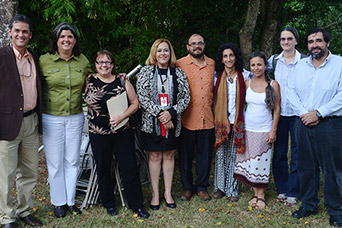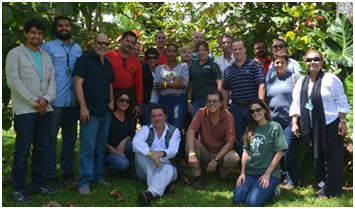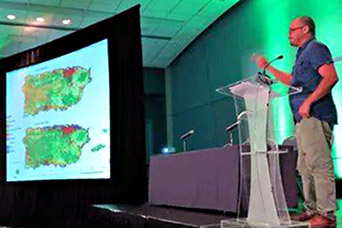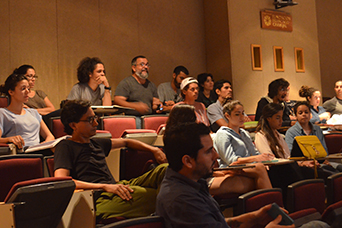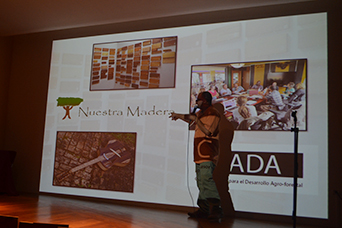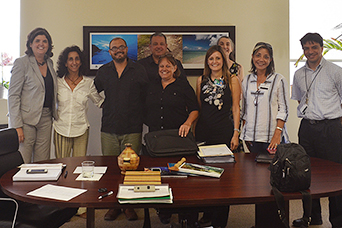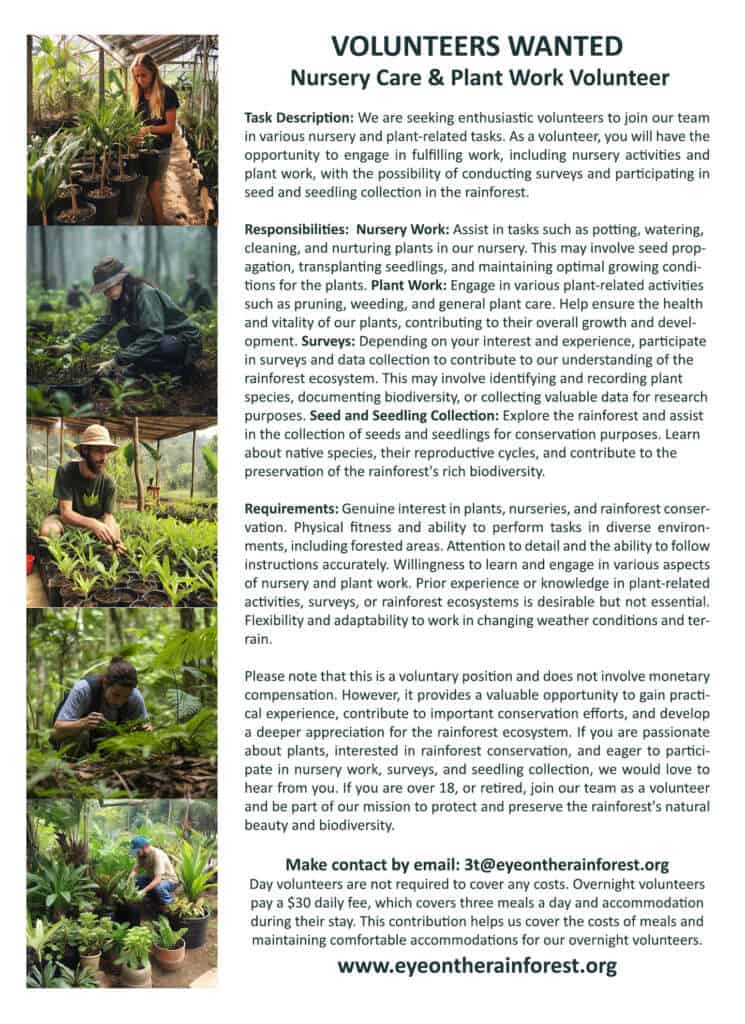
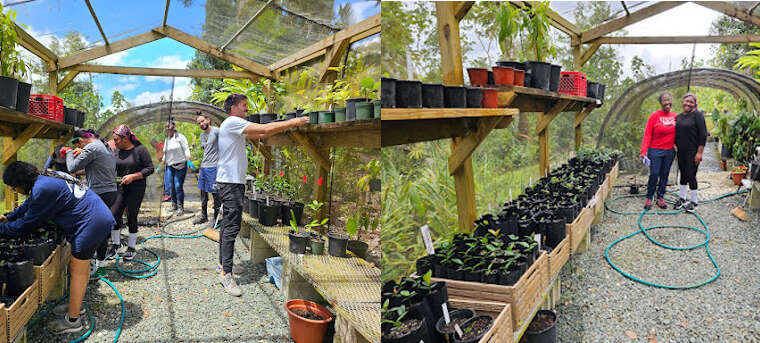




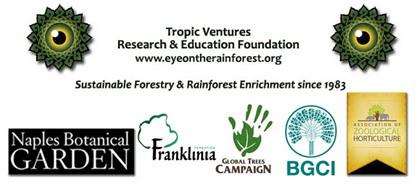
On Earthday 2021, a team of intrepid plant experts will spend the day in the Las Casas forest on a major survey, to scout for rare and endangered endemic species, and to identify everything along the journey. The team will identify trees, shrubs, lianas, grasses, bryophytes, fungi, fauna, and whatever else they find!!
Las Casas de la Selva is collaborating with Botanic Gardens Conservation International via the Franklinia Foundation, a private foundation established in Switzerland. BGCI is a registered charity and company in England and Wales, and in the U.S. as a 501(c)(3) non-profit organization. www.bgci.org
Chad Washburn, Director of the Naples Botanical Garden in Florida, USA. NBG is working with the team at Las Casas de la Selva throughout the process, and will join them in the field later in 2021.
In January 2021, Las Casas de la Selva successfully applied for a grant through Naples Botanical Garden to build a shade tree nursery at the project. The Association of Zoo Horticulture, (AZH), provided this grant.
See the video of this Earthday Botanical Survey 2021, at Las Casas de la Selva, Sustainable forestry & Rainforest Enrichment Project in Patillas, Puerto Rico. https://youtu.be/i2t4ISqMbIk
Conserve Magazine Pages 16-20 https://www.naplesgarden.org/wp-content/uploads/2021/08/Conserve.pdf
The Global Tree Campaign has partnered with Eye on the Rainforest, in Puerto Rico, with the aims of conserving tree species most at risk of extinction by increasing the technical capacity of project partners and improving the conservation status of these tree species. https://globaltrees.org/projects/securing-the-conservation-of-endemic-trees-in-puerto-rico/
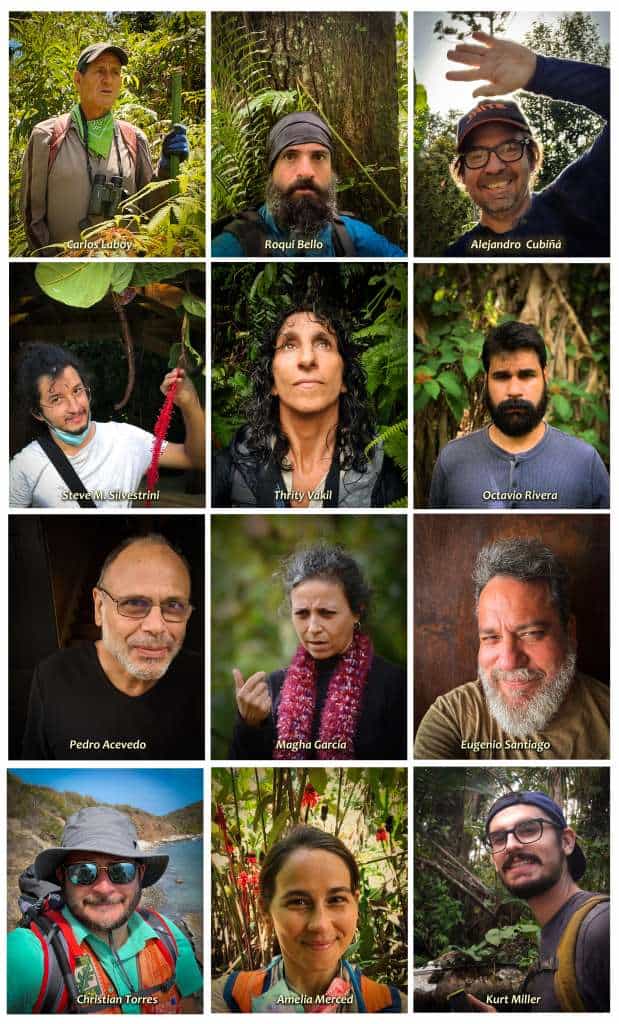
| Thrity (3t) Vakil serves as President of Tropic Ventures Research & Education Foundation at Las Casas de la Selva, a 1,000 acre Sustainable Forestry & Rainforest Enrichment Project in SE Puerto Rico, established in 1983, as a demonstration project to encourage similar practice in the Caribbean and globally, and as a contribution to economic development, that encourages local protection and sustainable management of secondary tropical forests. 3t has worked on tree planting, tree-id, selective harvesting, milling, and wood-drying operations for two decades, and has led sixty Earthwatch research teams into the forest, observing, measuring, monitoring, and planting, hundreds of trees. 3t directs endangered species conservation & recovery within the Tropic Ventures forest, propagates trees, and is currently surveying the land with a team of world-class botanists to locate critically endangered species in a collaboration with Botanical Gardens Conservation International. From a background in theater design and scenic art, and an Associate of the Institute of Ecotechnics since 1990, 3t has hands-on experience in a range of fields: ecology, expeditions, event management, arts, performance, and theater. On a major coral reef research expedition in the mid 90’s, 3t served three years as Assistant to the Expedition Chief, diving on remote coral reefs in the Red Sea & Indian Ocean, on the Institute’s Research Vessel Heraclitus, also crossing the Atlantic and Mediterranean Oceans. In 2015, 3t co-founded Puerto Rico Hardwoods, Inc. with Andrés Rúa, and from 2017 pioneered efforts in Puerto Rico to save hundreds of downed valuable hardwood trees after Hurricane Maria, that were destined for landfill. 3t is a Fellow of the Linnean Institute, a Fellow of the World Academy of Art & Science, and an accomplished artist. In 2021, 3t won an Innovation award from Yale University’s International Society of Tropical Foresters. |
| Steve Maldonado Silvestrini studied Architecture at the University of Puerto Rico, Rio Piedras Campus. Currently, he is an independent researcher on Neotropical Botany, Ecology and Taxonomy focused on the insular Caribbean, at the UPRRPR Herbarium. His studies aim to develop data on coastal plant communities, coastal habitats, and exotic species being introduced to the Caribbean. He is mixing both professions on what he proposes as non-anthropocentric or post-anthropocentric architecture, architecture for non-humans or not centered on human needs, but on an ecologically inclusive approach. |
| Roberto Enrique Bello alias Roqui, was born and raised in Puerto Rico. He double majored in Zoology and Anthropology at Michigan State University, and completed a Master’s in Integrative Biology at the University of California, Berkeley. Passionate about natural history and exploration, he worked or interned at various institutions such as the Museum of Zoology at MSU, the Museum of Vertebrate Zoology at UC Berkeley, the National Museum of Natural History at the Smithsonian, the Marine Biology Laboratory in Woods Hole MA, and the Organization for Tropical Studies in Costa Rica. Before settling back in PR he embarked on a personal sabbatical through 13 Latin American countries visiting nature reserves, archaeological sites, research stations, animal rescue facilities, etc. Upon his return to Puerto Rico, relevant job opportunities were scarce but he saw an opportunity in ecotourism. With the help of friends, he designed and developed an ecotourist enterprise in 40 acres of leased land in the Mameyes River drainage of Luquillo and adjacent to El Yunque National Forest. He managed this land and enterprise for almost a decade, until the hurricanes of 2017 turned the page and finished that chapter. Today Roqui is 46 years young and works as an independent environmental consultant on various projects concerned with natural resource management and biodiversity conservation. |
| Eugenio Santiago Valentín formally trained in botany at the University of Puerto Rico (UPR) in Mayagüez and at the University of Washington in Seattle. He is a Full Professor in the Department of Biology at the UPR in Río Piedras and is the director of the Herbarium of the UPR Botanical Garden. He has taught courses in biology, botany, plant taxonomy, ethnobotany, island biogeography and evolution. His areas of study include plant systematics and taxonomy, biogeography, plant conservation, history of science, and ethnobotany. His work focuses on the island of Puerto Rico and the insular Caribbean, where he has developed local and international collaborations. He has also participated with government agencies and non-for-profit organizations in initiatives for the recovery of threatened plants, for the public dissemination of scientific knowledge, and for the launching of activities to link science, nature, and the humanities. |
| Alejandro Cubiñá, President and owner of Reforesta, Inc. in San Juan Puerto Rico. UPR-RP graduate from the Masters in Science program under T. Mitchell Aide. Obtained a BA from Rollins College in Winter Park, Florida. Conducted extensive research in tropical forest restoration in Dominican Republic, Colombia, and Puerto Rico. Has led the biggest wetland restoration projects in challenging environments such as freshwater-forested wetlands on the island of Puerto Rico. Currently, Reforesta has the biggest privately owned native tree nursery in Puerto Rico and continues to add new species into its stock of over 8,000 trees. In addition to the ecological restoration work, Alejandro has conducted numerous flora and fauna surveys, wetland delineations, and prepared restoration plans. These surveys have led to the discovery of new populations of plant species such as Goetzea elegans, Ottoschulzia rhodoxylon, Myrcia paganii, and Libidibia monosperma. |
| Dr. Pedro Acevedo-Rodríguez (Ph.D., City University of New York, 1989) is a researcher and curator in the United States National herbarium at the Smithsonian Institution, Washington DC. He specializes in phylogenetic studies of the neotropical members of family Sapindaceae (Maples), especially of tribes Paullinieae (with ca. 500 species of climbing plants) and Melicocceae (ca. 75 species of trees and treelets); floristics of the neotropical lowlands, especially of the West Indies; diversity and floristic studies of neotropical climbing plants (lianas and vines, with about 700 genera); and botanical history in Puerto Rico. He has over 30 years of experience collecting and recording plants in the field, and numerous publications in his areas of expertise, as well as a website on West Indian botany and Lianas and climbing plants of the Neotropics. |
| Octavio Rivera Hernández is an agronomist graduated from the University of Puerto Rico, Mayagüez Campus (UPRM), where he completed the Agronomy and Soil Sciences programs respectively. Octavio has worked as a researcher at the UPRM and the Pennsylvania State University. There he contributed and collaborated on topics such as nutritional value of crops, post-harvest management and mycotoxin-producing phytopathogenic fungi. In 2018, he was the recepient of the Luis de Celis Prize, an award given by the Agro-environmental Sciences Department at the UPRM. Currently, he gives farmers recommendations and orientation regarding conservation practices, fertilization and pest control. Octavio also participates in the documentation and identification of native and introduced plant species in Puerto Rico. |
| Magha Garcia Medina is an eco-farmer and environmental activist in Puerto Rico. She is a member of Organización Boricuá, a grassroots group of farmers, environmentalists and other allies who advocate for agroecology, agroforestry, and the protection of natural resources. She is a collaborator at Las Casas de la Selva, the project that inspired her to find land and contribute with the restoration and the protection of local forests. In the last ten years, Magha had dedicated herself to the development of Pachamama Forest Garden on the west side of Puerto Rico. Her main activities involve research, rescue, and propagation of native and novel crops, as well exotic plants of the humid tropic region. Magha’s interests focus on agroecology/agroforestry/food sovereignty/human rights/seed saving/botany. |
| Amelia Merced is a plant biologist working with bryophytes, (plants that includes mosses, liverworts and hornworts). She is interested in diversity and distribution of bryophytes, the role of bryophytes in Puerto Rican forests, and how these plants respond to anthropogenic and non-anthropogenic disturbances. She works for the USDA Forest Service International Institute of Tropical Forestry, and collaborates with the Herbarium of the University of Puerto Rico, Río Piedras, where she works with the bryophyte collection. She is currently surveying the bryophyte flora of the island, and preparing guides to common bryophytes of PR, including El Yunque National Forest, and community and urban forests. Other projects are to assess the distribution and current status of the peatmoss Sphagnum in Puerto Rico, and habitat preferences of bryophytes in the Luquillo Experimental Forest. Amelia Merced-has a BA in science and MS in biology from the University of Puerto Rico, Mayaguez and a PhD in Plant Biology from Southern Illinois University in Carbondale, IL. She was a NSF GK-12 fellow in PR and IL working with schoolteachers to integrate inquiry activities in science classes of schools rural areas. She was a mentor and role model for the PBS Kids show ‘SciGirls’ filmed in PR and was featured in the Nat Geo web series ‘I Can Science’. Dr. Merced has 14 peer-reviewed publications, research awards recognitions, and has trained and mentored undergraduate students in various bryophyte identification and ecological projects. |
| Kurt Miller is a Washington native with a background in agriculture and tropical fungal taxonomy. He has collaborated with several prominent mycologists, including recent Distinguished Mycologist Award recipient, Dr. Jean Lodge at USDA’s Northern Research Station in El Yunque, and his work with Harvard mycologist Lawrence Millman can be seen in Fungi Magazine. Kurt received a BFA from Western Washington University and studied agriculture at the University of Puerto Rico in Mayagüez. He served in the US Coast Guard for 5 years as a Marine Science Technician fulfilling the Marine Environmental Response mission in Puerto Rico, eventually certifying as a translator. During and subsequent to his service, he has documented over 200 macrofungi in the Caribbean region, many of which are unreported in previous surveys. Several of these new taxa are currently being cultured and assessed for their culinary and commercial viability in Huerto Rico’s laboratory. Kurt has also led several educational and outreach events to teach school groups and the community about the importance of fungi in the environment. |
| Carlos Laboy holds an Associate Degree in Biology from the University of Puerto Rico in Humacao. His best attribute is a keen and instinctive knowledge of the natural world. He has the honor of having a fungus named after him. Laboy has worked for both state and federal conservation agencies in Puerto Rico (DNER and U.S. Forest Service). With DNER he collected data on the behavior and reproduction of wild parrots to assist in the development of techniques to increase parrot productivity, fertility, and survival. He also participated in the Rio Abajo parrot suitability study. In addition, duties included collection of samples on the lagoons, sanctuaries, and estuaries throughout the Island. At El Yunque, with the Forest Service, he continued management work of the wild and captive parrot populations. During his time in the rainforest, he rediscovered unaccounted populations of listed plants such as Palo de Jazmín (Styrax portoricensis), chupacallos (Pleodendron macranthum), and numerous other rare species. Since 2007, Carlos has worked with Reforesta, Inc. in the implementation of wetland restoration projects across Puerto Rico, and conducting flora and fauna surveys as well. |
| Christian Torres Santana is the Forestry Partnerships Leader for Latin America for Terraformation and consulting botanist and arborist. With an MS in Botany from the University of Hawaii, a BSA in Horticulture from UPR Mayagüez, a Nonprofit Management Executive Certificate from Georgetown University, he is currently completing an Executive MBA from the Inter American University, PR. Christian has worked extensively with rare and threatened plants in Hawai‘i and the Caribbean. In 2014, after nearly a decade as a botanist with the US FWS and the US Forest Service’s International Institute of Tropical Forestry, he became the director of the Doña Inés Park Arboretum in San Juan, PR. He led research, education, and conservation efforts for the native plant collection. Over the past 15 years, Christian’s work has specialized in pollination biology, forest health, biodiversity conservation, particularly on rare plant conservation, conservation horticulture, and environmental education. He recently received the Marsh Award for International Plant Conservation from Botanic Gardens Conservation International and the Kittleman Scholar for Aspiring Public Garden Leaders from the American Public Garden Association. He is a certified international Arborist, a Professional Horticulturist, and a Licensed Agronomist in Puerto Rico. |
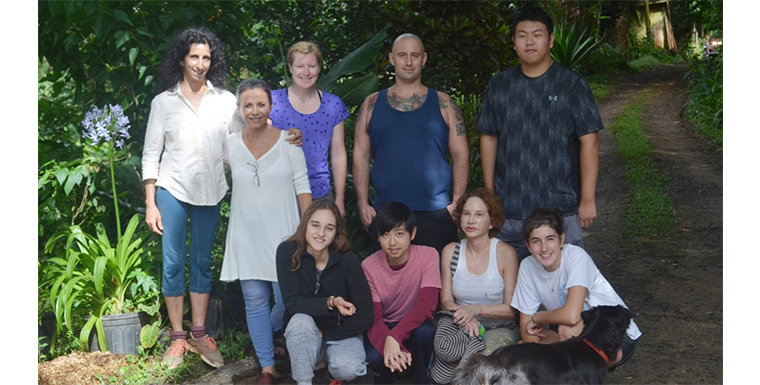
June was a very wet month, and we hosted an intrepid Earthwatch Teen team, that went way beyond comfort zones during their ten day stay. This Earthwatch Teen Team braved sometimes torrential rains to assist Principal Investigator Norman Greenhawk collecting Chytrid samples along the Ethnobotanical Nature Trail. The teens learnt teamwork rapidly and became skilled at how to set up collection plots, becoming familiar with the use of the compass, measuring tape, and twine. After letting the plots rest for two days, the team returned and conducted leaf-litter surveys, searching the fallen leaves and detritus of the forest floor for frogs and Sphaerodactylus geckos. All captured animals were weighed and measured, and all amphibians were swabbed to test for the presence of Batrachochytrium dendrobatidis (Bd), a fungus that can cause the amphibian disease Chytridiomycosis. This collection event is a part of Norman’s ongoing monitoring of Bd at Las Casas de la Selva.
See more about the Chytrid fungus: https://www.amphibiaweb.org/chytrid/chytridiomycosis.html
This team also measured and re-tagged 110 mahoe trees, (Hibiscus elatus), which are part of long-term study plots at Las Casas de la Selva, with Principal Investigator 3t Vakil.
Images by 3t and Chelsea Kyffin, who was the teen team facilitator.

Earthwatch Team 2015 with Stacey third from left. Thank you for a lovely reminder of our adventures together!
The Quest To Solve Wonders In The Rainforests Of Puerto Rico-Earthwatch Expedition
A video made by one of our 2015 Earthwatch volunteers, Stacie Stoffregen. Enjoy!…and she has said feel free to share it!

These 13 and 14 year olds from Montessori schools in PR and US, braved the torrential rains of the Patillas mountain to join us at Las Casas de la Selva for a few days together, helping 3t with
re-potting nearly 200 tree seedlings, and they also learnt some woodworking skills with Ricardo and Alex. Andrés was chef, and provided us with yummy foods and a barbecue. Thank you all.
Instituto Nueva Escuela, Puerto Rico, Staff: L-R: Juan Jose Rodriguez Fernos, Alberto Viera Vargas, and Elsa Román.
INE Students: Erick García, Shaday Ruiz , Darian Cotto, Alleysha Nevárez, Evaliz Arroyo, Zulibeth León, Angélica Rodríguez, Imanol Dererme, Jeshua Guzmán.
Cambridge Montessori, Boston, Staff: Far Right: Joyce Nett and Genoveva Calvo-Rey.
CM Students:Wilson O’Brian, Adon G, Liliana Abramson, Finn Paquette, Gwyneth McLear, Eliza Austin, Mia Bawendi, Derek Hansen, Eve Meyer.

Back row L-R: Inset, Israel Guzman, Herb Wexler, Janet Richards, Kamal Daghistani, Ziyou Yang, Diane Bentz, Julio Rodriguez. Front: Magha Garcia, Marigail Bentz, Chari Kauffman, Danny Nip, Patricia Salomon, Riona Kobayashi, 3t Vakil, Andres Rua.

Israel Guzman, President of SOPI, led the team into the forest for the first Winter Bird Surveys at Las Casas de la Selva. Marta Edgar previously carried out two years of surveys in the summer months with Earthwatch volunteers.

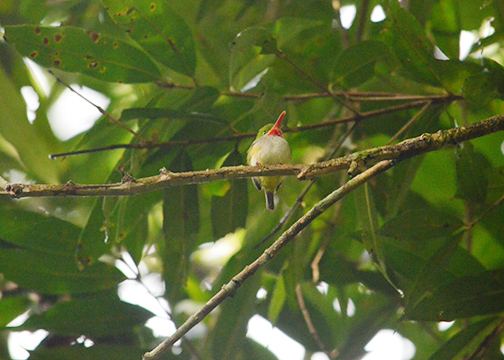

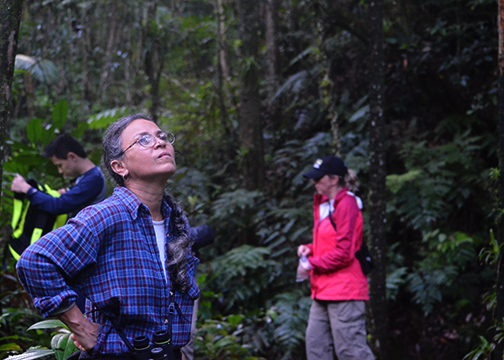
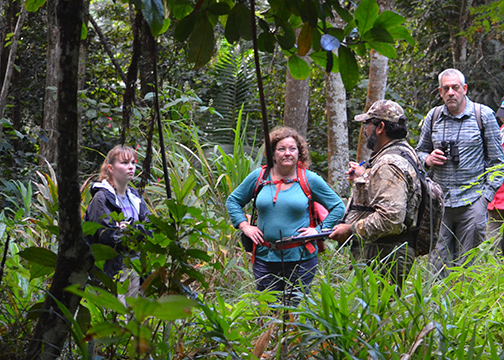

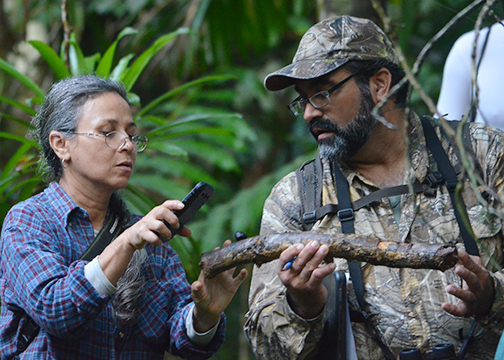
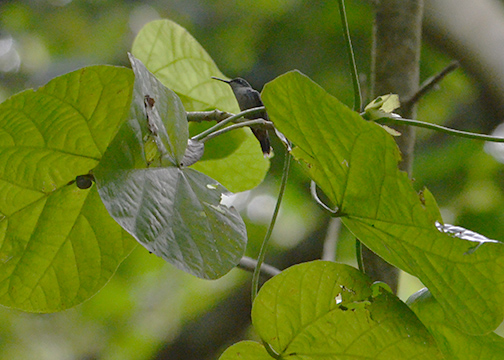

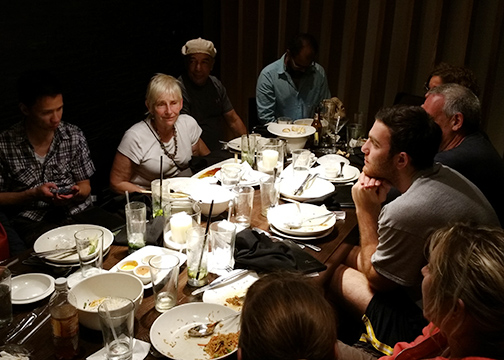

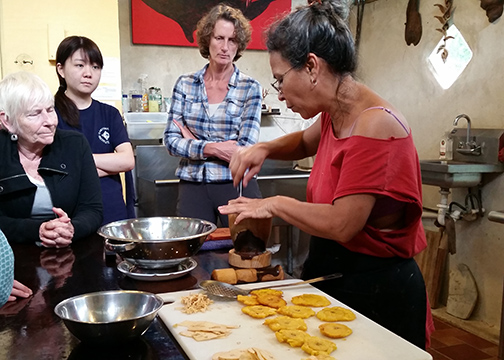
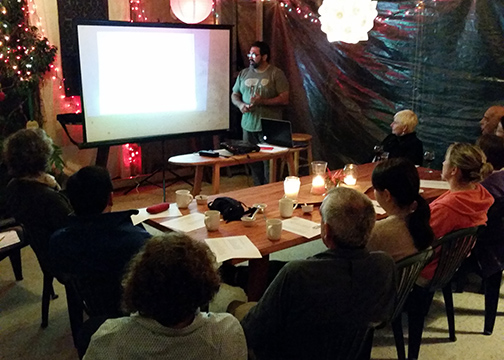
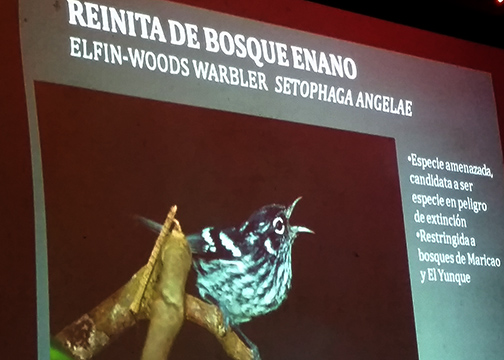




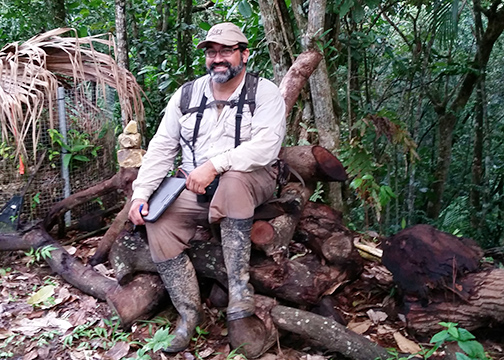
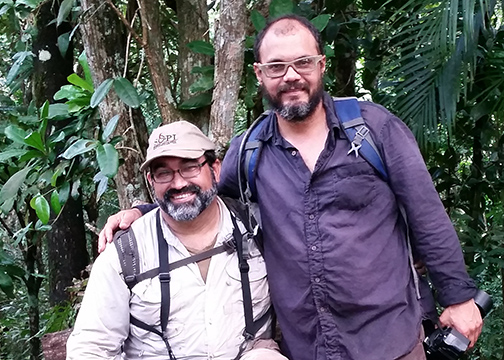


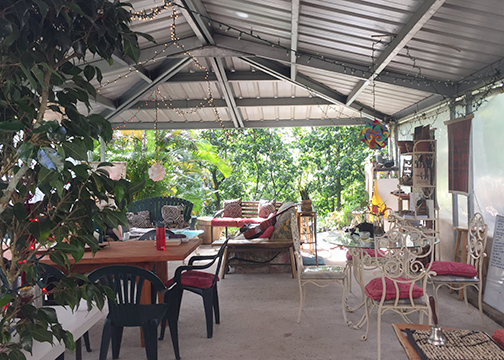
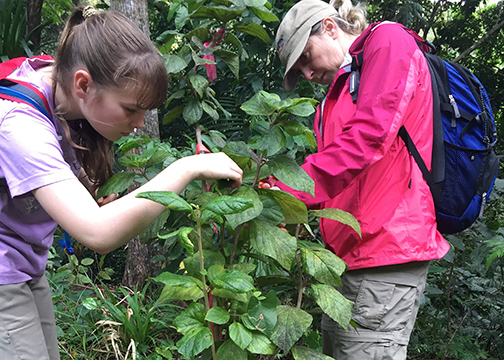

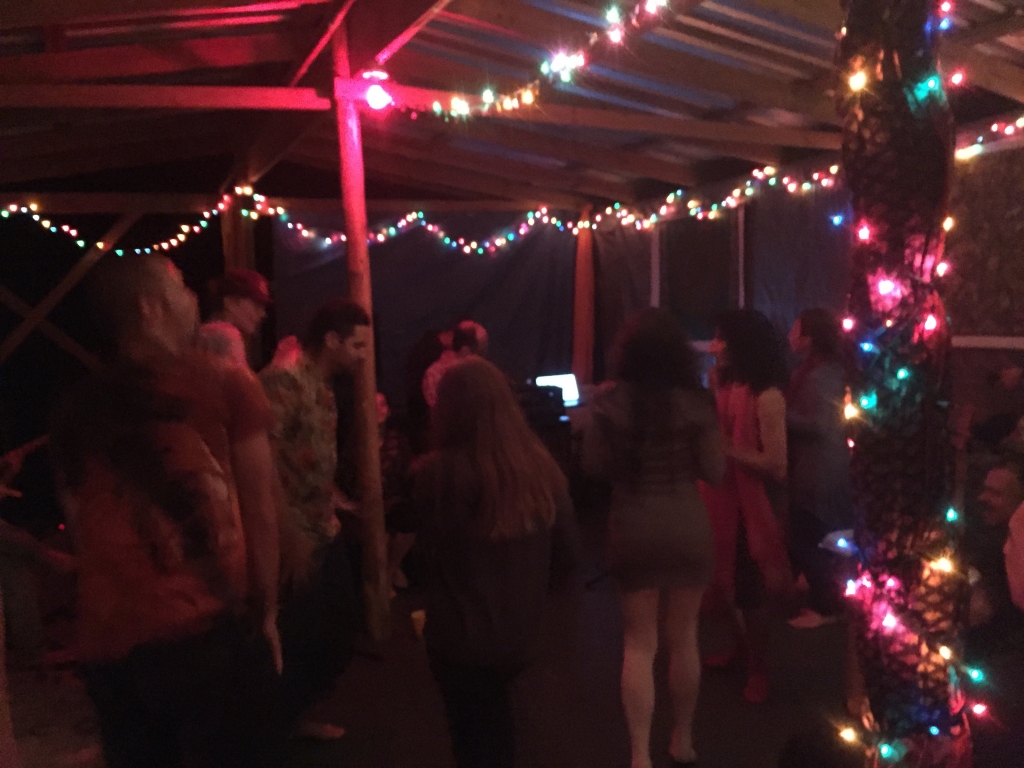


Globalworks brought the whole of the 8th Grade from San Francisco Day School to Las Casas de la Selva, May 2015.
We hosted three teams consecutively, for three days each. This wonderful bunch of teens planted critically endangered endemic Cornutia obovata trees in the forest.
Thanks to SFDS teacher Chris Corrigan for his tremendous leadership skills, and the enthusiasm he has brought to Las Casas over the last several years on Globalworks expeditions. Thanks to all the wonderful staff and students for the hard-work planting these Cornutia obovata out in the forest, and for the wonderful evenings back at the homestead. We salute you all! Thank you also to Globalworks staff, and to Las Casas volunteers Alfredo Lopez and Helen Galli, for all their help.
All pix by 3t Vakil unless otherwise credited.
See more about this tree-planting project https://eyeontherainforest.org/?p=5462



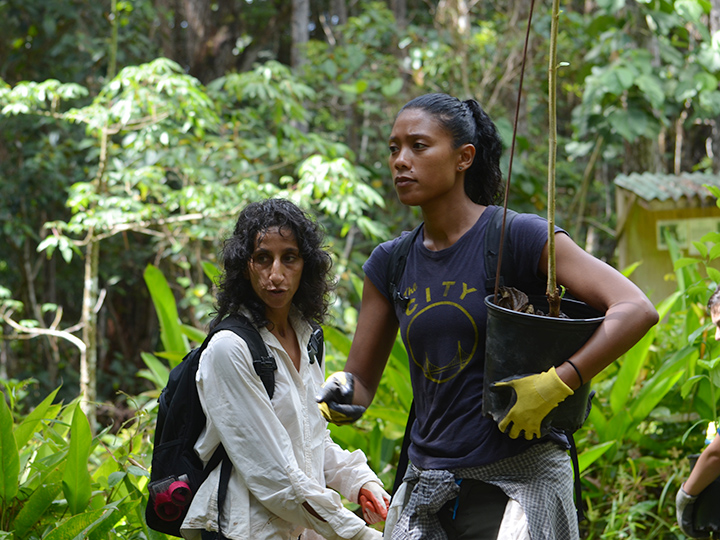
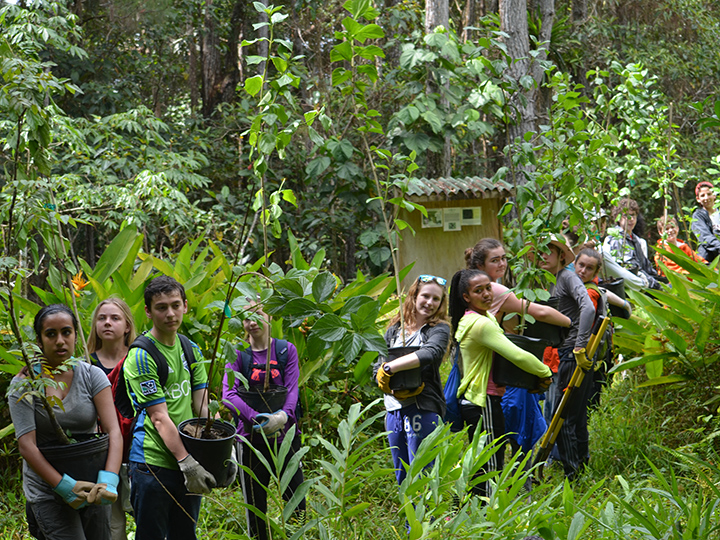
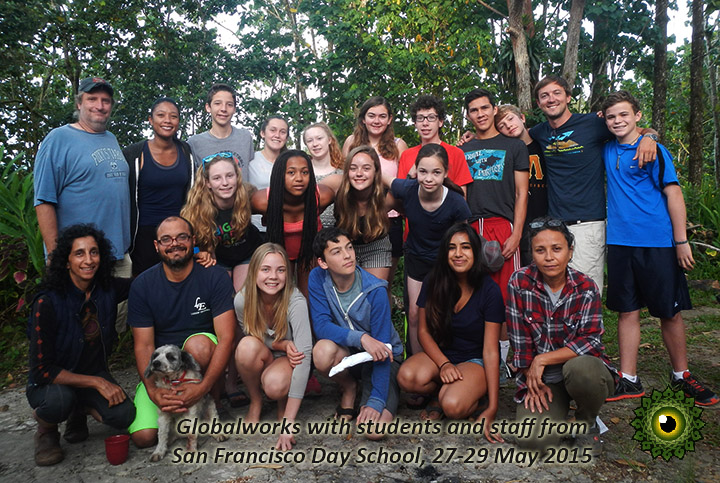

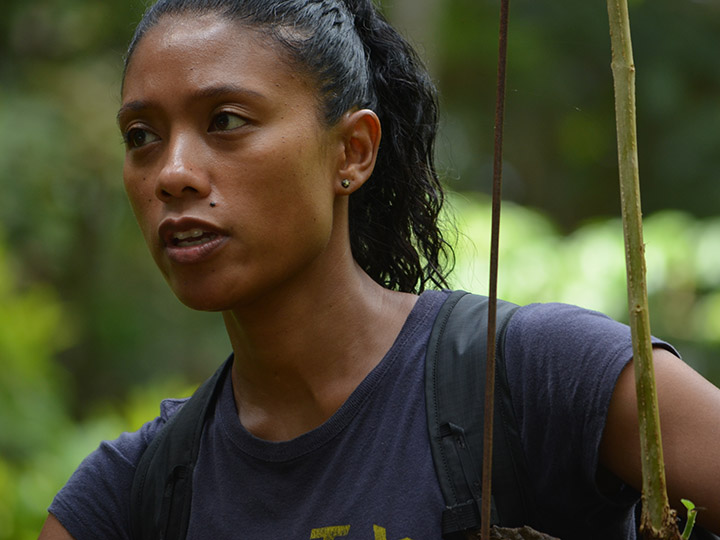


Thank you Earthwatchers for your help in herpetological surveys, planting of endangered endemic trees, Cornutia obovata and Styrax portoricensis, and for help in the nursery re-potting seedlings collected from the previous year.
Principal Investigators: Dr. Mark Nelson, 3t Vakil, Norman Greenhawk.
2015 Images by 3t Vakil, Lisa Bennet, and Susannah Garrett.
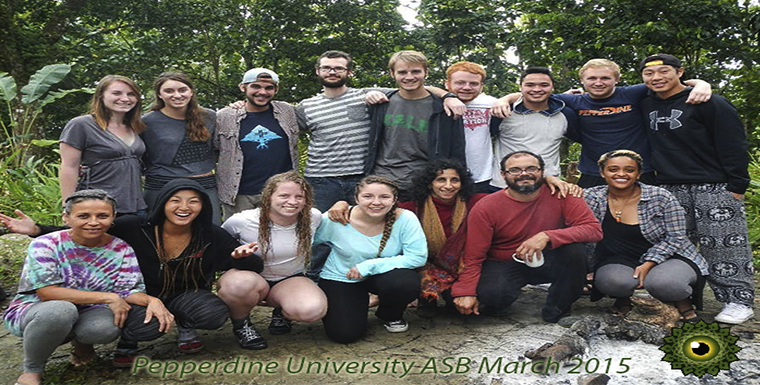
Pepperdine University students spent seven days at Las Casas de la Selva, helping with various tasks led by Andrés Rúa, ranging from plastering the new retaining wall and walls on the main house, as well as work on the ethnobotanical trail, step-building, pruning, and prepping surfaces for more work. This team were lucky to have a cooking class with renowned gourmet chef Magha Garcia Medina, and a rocking Salsa Dance Class with Yara Soler Garcia.
We had a superb time with this team, and we thank you all for all the joy and enthusiasm that you brought to the project. Please revisit in the future! Thanks also to William Robinson who has been volunteering here for one month.
On the second day of the group’s visit, Simarouba, our beautiful white cat gave birth to 5 kittens. Magha Garcia Medina takes the students on an exploration of the foods of Puerto Rico, and we end up with a Sancocho for dinner. If you have never had Sancocho, here’s the place to come and try it!
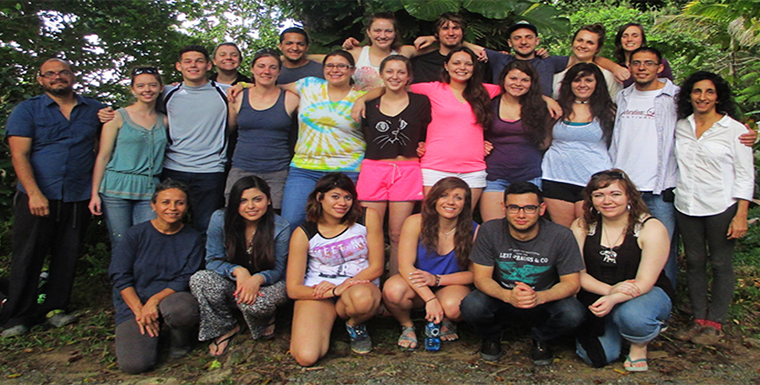
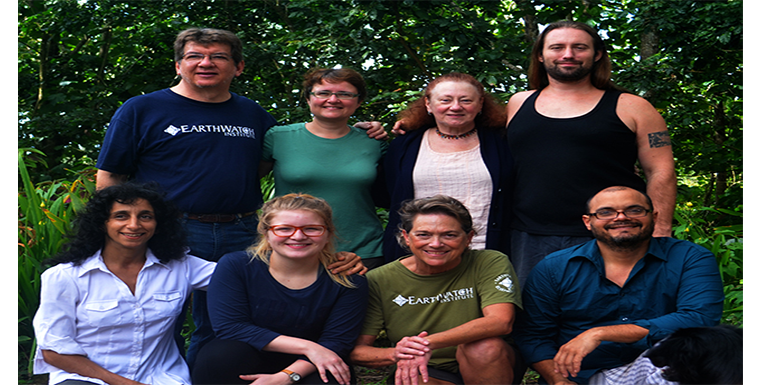
Back L-R: Stan Rullman Cindy Stieger, Margaret Baisley, PI Norman Greenhawk
Front L-R: PI 3t Vakil, Charlotte Field, Colleen Casey, Andrés Rúa
All pix on this page thanks to all above.
See Stan’s Blog about this trip!
https://earthwatchunlocked.wordpress.com/2015/04/30/from-trees-to-coquis-an-earthwatch-scientist-explores-puerto-ricos-rainforest/ 2015
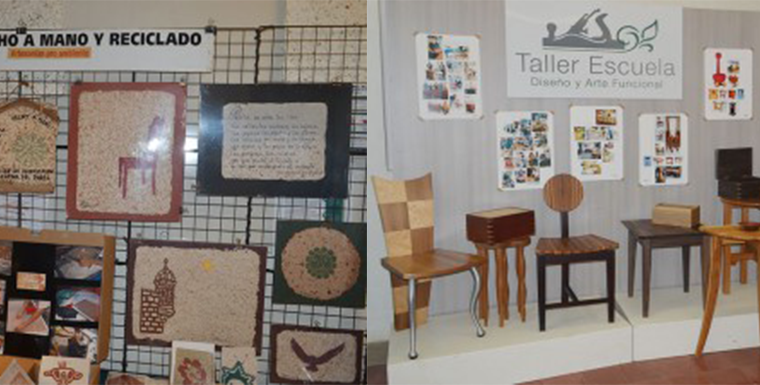
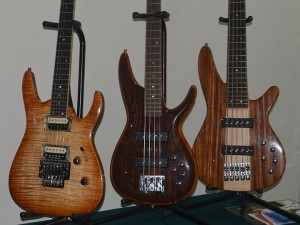
SEE MORE IMAGES HERE:
https://plus.google.com/photos/114745085458651133282/albums/6089798854434161681?authkey=CLytzaWvsMmIfg
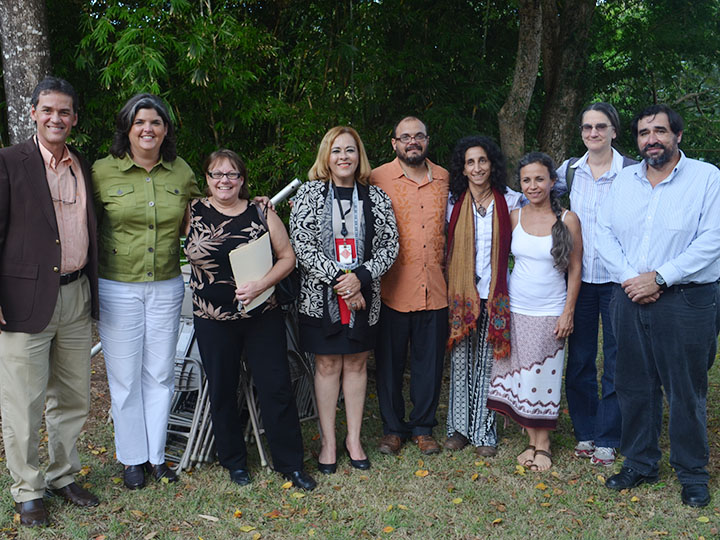
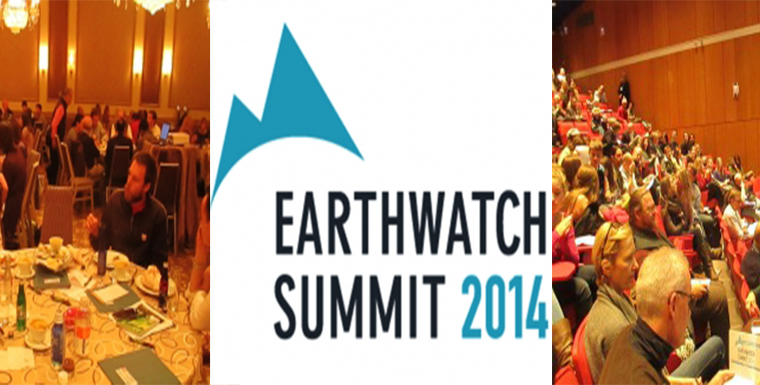
Earthwatch Summit October 2014 Pix by 3t https://t.co/W9FwlZisif pic.twitter.com/KcEP9cYjZk

The steep and remote areas of Icaco and Hormiga Valleys of Las Casas de la Selva have never been surveyed for amphibians. Herpetologist Norman Greenhawk led a team of volunteers into the forest to search for target species of frogs in this vast area, to identify and gather information about amphibians to better assist with the future management of this area. The expedition started on 16th July, and continued to 8th August 2014. The team set up camp in the forest, prepared their own food, and faced some days of extremely challenging windy and rainy weather, including an interruption of the study by Tropical Storm Bertha! The team included college students from the continental US, Puerto Rico, an Earthwatch Teen Team, and Dr. Gabriela Agostini from Argentina. They and came back with a lot of data.
The target species that were confirmed to exist in the valleys were: IUCN Endangered Eleutherodactylus wightmanae (the Coqui Melodioso), IUCN Vulnerable Eleutherodactylus cooki (Coqui Guajon), and IUCN Critically endangered Eleutherodactylus richmondi (Coqui Caoba).
During the surveys, the team sampled for Chytridiomycosis, an infectious disease of amphibians, caused by the chytrid Batrachochytrium dendrobatidis, a non-hyphal zoosporic fungus, that is currently killing off amphibians around the world. GPS co-ordinates of appropriate information were taken to allow for mapping of the range of target species within the valley, and high quality photos of the frogs were taken to help show the myriad variation of colors and patterns within a single species.
The initial survey is over and the data is being compiled. Norman has met with personnel of the US Fish and Wildlife Service to help determine future monitoring and research. Once the results of the Chytrid sampling are delivered from the San Diego Zoo, a report will be written up and submitted to a peer-reviewed journal for publication. This survey will continue with a smaller team, as the mountain ridge that separates the two valleys needs to be accessed and sampled.
Norman expresses deep gratitude to team members Sarah Bryan, Jessica Rosado, Marla Gonzalez, Sara Gabel, Sara Zlotnik, Alessandra Belmonte, Sam Boas, Kaitlin Panzer, Lauren Billy, and co-team leader Gabi Agostini. Huge thanks also to Earthwatch Team members: Alana Salas-Yoshii, Josie Icaza, Samantha Riesberg, and their facilitator, Sushmita Sridhar.
Big, big thanks to the Mohammad bin Zayed Species Conservation Fund, CREOi, Roland Pesch and Kathy Rosskoph, without whom this survey would not have been able to be carried through.
Lastly, a special thanks to Thrity Vakil & Andrés Rúa for help with logistics, Leah Chevrier-Rappaport for extra volunteer help, and to Jan Zegarra of the US Fish & Wildlife Service for his encouragement, help with analyzing the results, and for consultation concerning future research possibilities.
Meet the team:
L-R Back: Sam Boas, Norman Greenhawk, Marla M. Barrios González, Lauren Billy, Alessandra Belmonte, Sara Gabel.
L-R Front: Leah Chevrier-Rappaport, Sarah Bryan, Jessica Rosado, Gabriela Agostini, Sara Zlotnik
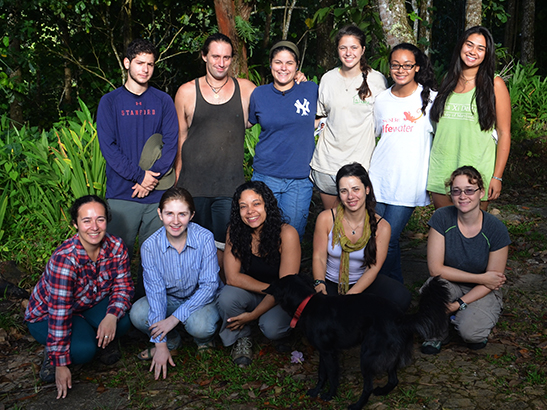
EARTHWATCH PARTICIPATION:
For several days of the survey, the team also comprised of three teenage Earthwatchers, Alana Salas-Yoshii, Josie Icaza, Samantha Riesberg, and their facilitator, Sushmita Sridhar.
Photo credits: Norman Greenhawk, 3t Vakil, Andrés Rúa, and Dr. Gabi Agostini (frog pix below).
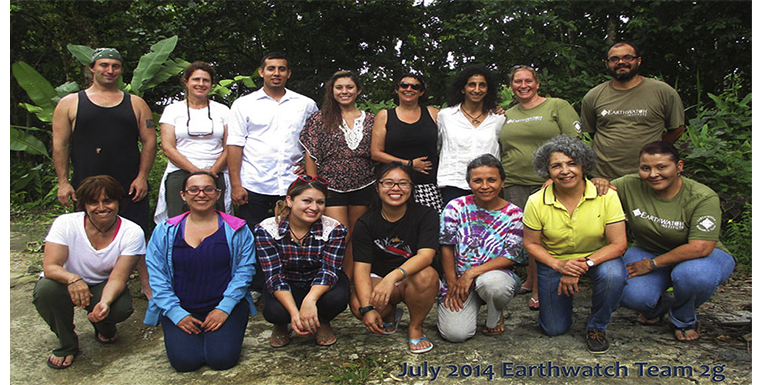
Thank you to all the Earthwatchers who fielded in our summer season. Through rain, mud, and slippery slopes, everyone made it over established comfort levels and discovered themselves anew at the end of each expedition. We are happy to have had Marta Edgar here as PI on the ongoing Bird Survey, and she worked with the first team. 3t continued on with tree data collection on the Liberation thinning study and also gathered, with team 2g, a complete monitoring of the endangered endemic tree species planted last year in a collaborative project with US Fish & Wildlife. Norman is carrying out a one month Herpetological survey in Icaco and Hormiga Valley and the teenagers on Team 3 along with their Earthwatch Facilitator, got to camp for 6 days and work on this study.
We really appreciate the level of enthusiasm brought to our project by volunteers, because without you, data would be hard to collect. We salute you all.
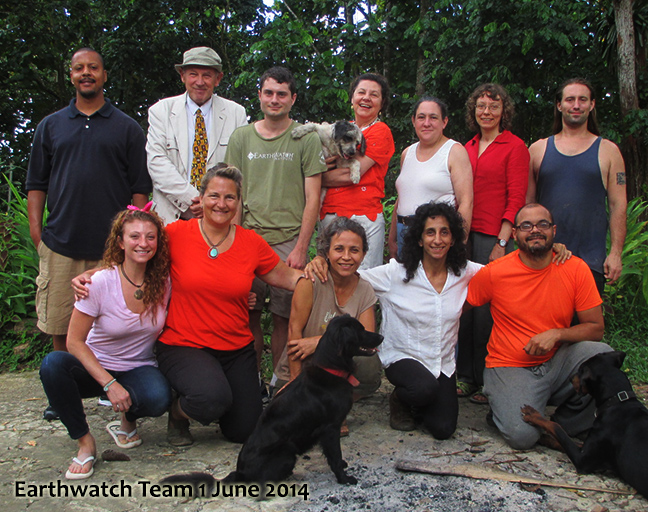
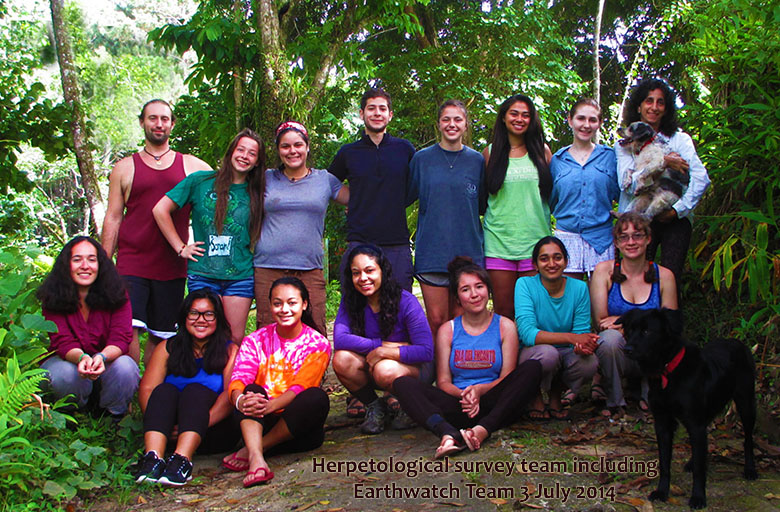


Norman Greenhawk was away from Las Casas de la Selva for the majority of 2013, from April through Mid-November, on travel and training on the Earthwatch Neville Shulman Award for Emerging Environmental Leaders. Norman won the award based on his proposal to study not only various species of reptiles and amphibians, but also to conduct ethno-herpetological interviews with local people through Central and South America to record attitudes, uses (medicinal, ritual, economic, etc), and beliefs about frogs, snakes, lizards, and crocodiles.
Norman’s travels took him to Panama, where he studied with the brilliant Dr. Julie Ray of La MICA and with the Smithsonian’s Panama Amphibian Rescue and Conservation project. Norman learned to catch and relocate endangered crocodiles with the American Crocodile Education Sanctuary in Belize. In Honduras, Norman learned the finer points of monitoring the endemic Utila Island Iguana, a species of lizard that is adapted to inhabit only the mangrove swamps of Utila Island. Norman ended his trip with a month in Bolivia, studying critically endangered frogs and interviewing the indigenous people who ran the “Mercado de las Brujas”.
Upon his return to Las Casas, Norman led an expedition into Icaco Valley with Jan Zegarra of the US FWS, and Maria Cristina of Universidad Metropolitana. The purpose of the trip was to monitor the population of Eleutherodactylus cooki, the “Coqui Guajon” that Norman discovered in December 2012, but there was a pleasant surprise. This expedition confirmed the presence of Eleutherodactylus richmondi, the “Coqui Caoba”, an IUCN critically-endangerd frog. According to Jan, whose Master’s thesis was on E. richmondi, there is only one other area in all of Puerto Rico where E. cooki and E. richmondi share habitat; Jan said this makes Icaco is a very special and unique location.
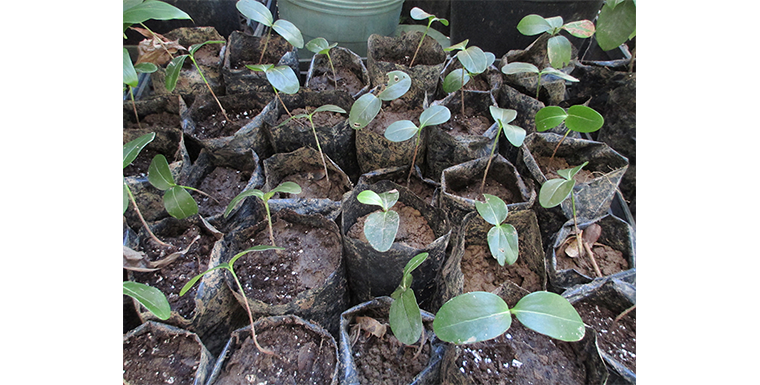
Collecting Ausubo seedlings sounds like an easy task, but carrying full tree bags up and down forest slopes back to the homestead is demanding physical labor.
Our current Earthwatch Team assisted with this task on New Years Eve, and in one morning we collected 110 Ausubo (Manilkara bidentata) seedlings.
Ausubo (Manilkara bidentata), also known a balata, is a large evergreen forest tree that was probably the most important timber tree of Puerto Rico. It grows best in Puerto Rico on alluvial plain where it may reach the age of 400 years. Ausubo is extremely tolerant of shade. The strong and attractive wood makes it highly valued commercially an it is widely used in the tropics for many woo products. The tree is often tapped for its milky latex the source of balata gum. Although growth is slow, ausubo is planted for shade and timber.
Ausubo is one of the strongest and most attractive commercial woods in Puerto Rico. It is widely used in the tropics for railway sleepers, bridging, heavy construction, furniture, turnery, flooring, violin bows, and billiard cues. Its strength, high wear resistance, and durability qualify the timber for use in textile and pulpmill equipment. Its excellent steam-bending properties make it suitable for boat frames and other bent work.
The heartwood is light red when cut and turns to dark reddish brown when dry. The sapwood is whitish to pale brown. The wood is very hard, strong, fine textured, and heavy, with a specific gravity of 0.85. The wood rates excellent for boring, fair for planing, and poor for turning. It is difficult to air season and shows severe checking and warp if dried too fast. The wood finishes very well and resembles mahogany.
This info is by Peter Weaver, one of our favorite foresters, and good friend. For more detailed info on this tree and its properties see: https://www.na.fs.fed.us/pubs/silvics_manual/volume_2/manikara/bidentata.htm

Planting endangered endemicsWe have an enthusiastic team of Earthwatchers here till the 6th January 2014. Continuing our collaborative project with Fish & Wildlife, we planted critically endangered endemic tree saplings, Styrax portoricensis and Cornutia obovata. To date 116 Styrax and 21 Cornutia have been planted in our spectacular secondary forest here in the Mira Flores mountain, better known as Las Casas de la Selva.
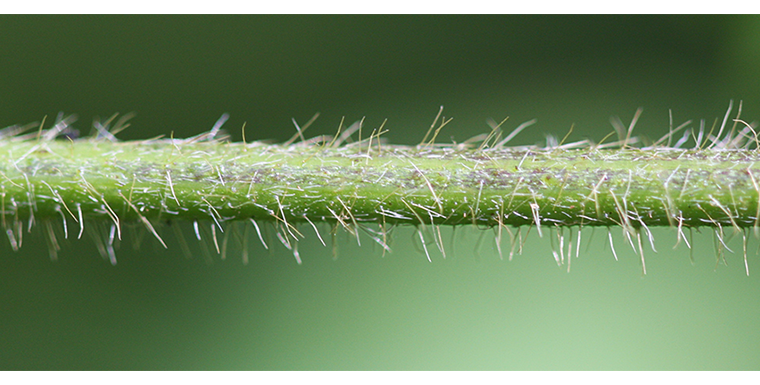
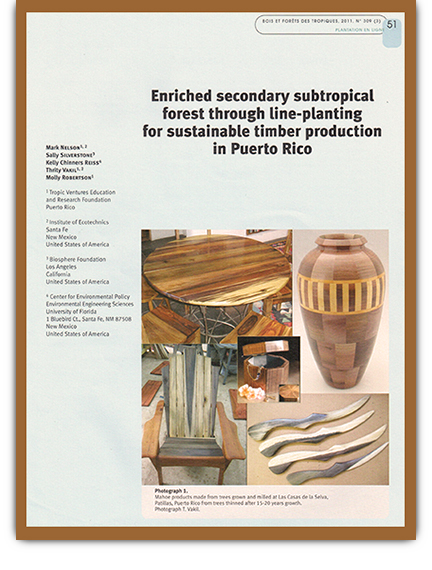
SUMMARY
1984: In general the plantation design was to plant at approximately 3m (10 ft) spacing within the lines and 10m (32.5 ft) from line to line through the forest. In the process of line planting, larger trees and valuable native timber species were left in place and the lines continued with a gap left around them. This technique closely mimics a medium-sized tree fall gap, in which the forest floor litter and soils are undisturbed, but the above ground nearby competition is removed, such as vines and overhanging branches.
2000-2008 19 study plots, 1 acre (0.4 hectare) in size 16 plots of mahogany 3 plots of mahoe. 997 trees studied. Complete sets of reading taken twice. Range 24 to 42 mths between readings.
SURVIVAL RATE Mahogany plantings – 28% approx (dependent on plot aspect- see results, sw best) Initial planting approx. 370 trees per hectare (148 trees per acre) Mahoe plantings – 66%. Initial planting approx. 415 trees per hectare (166 trees per acre) DBH Mahogany trees are increasing in dbh by an average of 0.6 cm per year Mahoe are increasing by an average of 0.91 cm per year. HEIGHT since planting: Mahogany has grown in height at a rate of approximately half a meter per year. Mahoe at a rate of approximately one meter per year.
INDICATIONS The growth data indicate the Mahoe plantation has been far more successful than the mahogany in terms of wood production. At current rates of increase it would take the mahogany at Las Casas another 27 years to get 30 cm dbh trunks for logging, giving a total time from planting to harvest of 43 years. It is currently possible to harvest marketable wood from the mahoe at 15 years. Current conservative estimates for standing marketable wood for mahoe are approximately 58 cubic meters per hectare (25,000 board feet per hectare or 10,000 bd ft per acre). This makes the Mahoe a good candidate for sustainable forestry management where the aim is to get the trees on a cycle of harvesting and replanting to provide a continuous income. A final evaluation of this line planting method as a model for sustainable forestry will be possible when trees are being annually harvested selectively, replanting begins, and the wood and products successfully sold for profit. Future challenges with the Mahoe plantations will involve working out the best thinning and replanting strategies, (and dealing with issues of extraction on slopes, drying techniques, and forest road and bridge repairs after nearly thirty years and two hurricanes). The challenge is on.
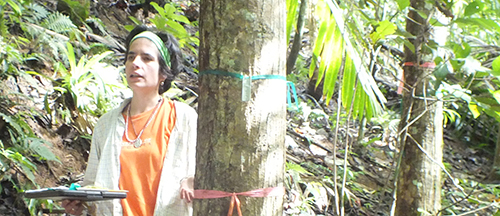
Ongoing research on the Mahoe plantation: 2010 – 2012
Jimena Forero is pursuing a PhD Degree at the University of Puerto Rico, Rio Piedras campus. As part of her dissertation she is describing the stand density and the canopy structure of our mahoe enrichment plantation in order to make recommendations for its management. Using our three 1-acre permanent mahoe plots, she has, with the help of undergraduates and Earth Watch volunteers conducted a forest inventory over two years (2010-2012) of these plots at Las Casas de la Selva. Her academic supervisor is Dr. Jess K. Zimmerman, Environmental Sciences professor at University of Puerto Rico, Rio Piedras. Another part of her dissertation involves interviewing artisans all over the island, who use forest products.
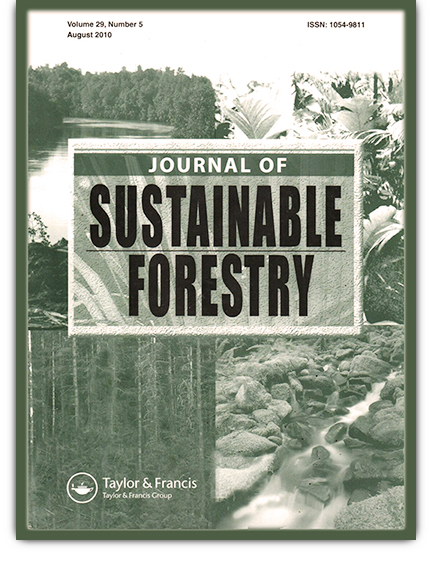
NELSON MARK, SILVERSTONE SALLY, REISS KELLY, BURROWES PATRICIA, JOGLAR RAFAEL, ROBERTSON MOLLY, VAKIL THRITY, 2010. The impact of Hardwood Line-Planting on Tree and Amphibian Diversity in a Secondary Subtropical Wet Forest of Southeast Puerto Rico. Journal of Sustainable Forestry, 29(5): 503-516.
(Click link above to download 188KB PDF)
SUMMARY
2000-2004 Amphibians: Amphibians are especially useful as biological monitors of environmental health (Wake, 1991). Because in Puerto Rico frogs are the most important vertebrate nocturnal carnivores, a change in their population dynamics could have an important effect on the forest food web (Joglar, 1998). Thus, monitoring amphibians at Las Casas de la Selva was a suitable way to assess the impact of a line-planting forestry approach to tropical forest ecosystems. Main difference between the studied forested areas was that one had been disturbed to plant trees of potential economic value (line-planting), while the other area had been left undisturbed. There was no difference in species composition between the two areas studied. Eleutherodactylus coqui and E. wightmanae are the two most common species in both forests, with occasional sightings of E. portoricensis.
We were happy to note:
Analysis of variance (ANOVA) of mean relative abundance of the two most common species revealed no significant difference between forests.
This is encouraging data.
These results suggest that the degree of disturbance caused by planting economically valuable trees had no effect on amphibian diversity or density in Patillas, Puerto Rico. At a time when the impact of anthropogenic activities on amphibian populations are being evaluated (Stuart et al., 2005), it is important to show that the type of forestry enrichment practiced at “Las Casas de La Selva”, did not have a negative impact on frog abundance. Our work in Las Casas de la Selva is the first record of population densities of E. coqui in the central cordillera of Puerto Rico, and the first record of population densities for E. wightmanae.
At a time when amphibian populations are declining all over the globe, and populations of these two species are declining at El Yunque, these data from Patillas represent a very valuable baseline that will allow us to monitor population fluctuations and potential declines associated to climate change or disease. Chytrid fungus Since June 2004, various species of frogs at Las Casas de la Selva have been sampled for the incidence of a pathogenic chytrid fungus, Batrachochytrium dendrobatidis (Bd). This fungus is specific to amphibians and has been associated to their decline in various parts of the world (Longcore, 1999), including Puerto Rico (Burrowes et al. 2004). Tissue is taken from toe clippings and/or ventral skin scrapes, and analyzed for the chytrid DNA via specific PCR diagnostic methods. Results show the presence of chytrids in Patillas as early as 2005. At present, the level of incidence of Bd infection in Eleutherodactylus coqui is of 50 % and in E. wightmanae is 44 %. Biodiversity of Trees: Overall the line-planting program has resulted in a small increase in overall diversity of tree species in those areas. See results in the full paper, link above.

Ongoing Coqui frog research at Las Casas de la Selva: 2010 – 2012 Patricia Caligari (center) is pursuing a Masters Degree at University of Puerto Rico, and as part of her thesis is sampling for chytrid in three species of endemic frogs in different parts of Puerto Rico, including Las Casas de la Selva. Her crew of undergraduate students help in the field and lab with DNA extraction. Her advisor is Dr. Patricia Burrowes, co-author of our paper above. More info
All studies are a building block in the more complex strategy of developing techniques to both satisfying human needs and conserving the resource base.” Ariel Lugo

This program has been formulated to protect endangered flora and fauna by planting endangered endemic tree species, and working on habitat enhancement in subtropical wet forest. The location and the quality of the habitat of the 930-acre forest property of Las Casas de la Selva is ideal for the establishment of projects toward the recovery of various endangered endemic tree species. The property’s north-eastern border adjoins the Carite State Forest which contains another 6,660 acres of subtropical wet mountain forest land.
Tropic Ventures Research & Education Foundation are collaborating with US Fish and Wildlife Service (FWS) to develop habitat enhancement and restoration projects that benefit endangered endemic species of Puerto Rico. The animals include the Puerto Rican boa (Epicrates inornatus), broad-winged hawk (Buteo platypterus brunnescens), Puerto Rican sharp-shinned hawk (Accipiter striatus venator), the Guajon coqui frog (Eleutherodactylus cooki), and Puerto Rican plain pigeon (Columba inornata wetmorei).
Most of these species have been identified on this land, which makes it eminently suitable for their long-term habitat protection & enhancement. The area also provides habitat for several listed trees that have been identified within this geographical area (Eugenia haematocarpa and Callicarpa ampla). The area also harbors habitat for two Candidate Species; the elfin-woods warbler (Dendroica angelae) and the vine/shrub Gonocalyx concolor. The proposed project will also focus on the establishment of two experimental populations of the federally listed tree Styrax portoricensis. Furthermore, the area to be enhanced is part of the Rio Grande de Patillas upper watershed, which serves a large regional population with potable water, and will benefit the water quality of this river by reducing soil erosion.
As part of this project, Tropic Ventures Research and Education Foundation agree to maintain and protect the specific areas to be enhanced or under restoration practices for a period of at least 10 years. The areas for habitat enhancement will not interfere with other areas of the property which have been planted with forest enrichment trees, and is already in a program of sustainable management including selective harvesting of timber trees. Las Casas de la Selva is certified as Stewardship Forest and under the auspices of the Puerto Rican Department of Natural Resources (DNR) and the International Institute of Tropical Forestry (IITF) has an approved Stewardship Management Plan. Tropic Ventures Research & Education Foundation has a contract with Tropic Ventures (the managing entity) to conduct scientific studies and educational research work on the entirety of the land for the next 50 years.
Earthwatch volunteer collaboration
Initially Earthwatch volunteers will be engaged in the process of site selection, site mapping, tagging and planting, measuring the saplings, and data collection. A biologist from FWS may accompany us on some these expeditions to assist in the process. See below for long-term monitoring process. All tree work is dependent on weather and care will be taken on steep slopes as always. There will always be nursery work, which may include pruning, care and maintenance of young seedlings, and of endangered tree species.
PROPOSAL
1. ENDANGERED SPECIES: Establishment of new populations of Styrax portoricensis. Establish at least two populations composed of about 50 individuals each in approximately 2 acres. Expected survival is 75% after the 2nd year of planting. Styrax portoricensis, locally known as palo de jazmin, is a species of flowering plant in the family Styracaceae. It is one of the rarest endemic trees of Puerto Rico and is found only in the northeastern Luquillo Mountains (Sierra de Luquillo) and the north-central Cayey mountains (Sierra de Cayey).
2. HABITAT ENHANCEMENT: Establishment of a shade nursery for caring and sheltering of saplings of threatened endemic species until planting.
3. LONG TERM MONITORING: The aim of this effort is to monitor the initial survival, growth rate, and success of the reintroduced material to ensure the best contribution to the recovery of the species.
4. REPORTS: Annually
5. OUTREACH: We will develop an outreach project to promote the recovery efforts and to educate the local community and visitors. This program will include fliers, brochures, and boards and signs along trails etc.
This project has enabled Andrés Rúa to visit with sawmill owners over the island, interview dozens of artisans who work with forest products, as well as large & small scale wood & product dealers. The project aims to investigate use of forest products in Puerto Rico; where wood is coming from, what types of wood, who are the buyers, and what other forest products are in demand and use?
A symposium in April 2012 brought together over eighty people, ranging from foresters, arborists, woodworkers, DRNA staff, artisans, architects, professors, and UPR students, the symposium was hugely informative. The event was dedicated toCarlos Domínguez Cristóbal, author of “Panorama historico forestal de Puerto Rico”, and to recently retired forester Dr. Peter L. Weaver from IITF.
The Forest Products Assessment project continued with an in-the-field event in August 2012 led by Andrés Rúa. A pine tree was felled by arborist Andre Sanfiorenzo, hauled out by tractor, and milled. The event was to bring together and give those who shown an interest at the last Symposium the opportunity to actually partake in a timber project. Andrés showed the mill at work and several people had the chance to operate it. After a gourmet lunch, the afternoon continued in el teatro where lively and heated discussions dealt with the next steps to creating an intelligent future for timber production and forest products in Puerto Rico.
March 2013 saw the beginning of the second phase of the Forest Products Assessment, with a meeting at the International Institute of Tropical Forestry, (Images here) and then in in May 2013 at the University of Cayey, (Images here). More details on www.nuestramadera.org
CADA, Council for the Development of Agro-forestry, founded by Andrés Rúa and 3t Vakil, May 2013, was born from forestry discussions, which began with Frank H. Wadsworth in private meetings in 2008. The open membership includes individuals from universities and the private sector, members of Government agencies, and many other institutions, all brought together with an over-arching interest in the development of policies pertaining to the sustainable and intelligent use of all Puerto Rico’s valuable & unique natural resources.
